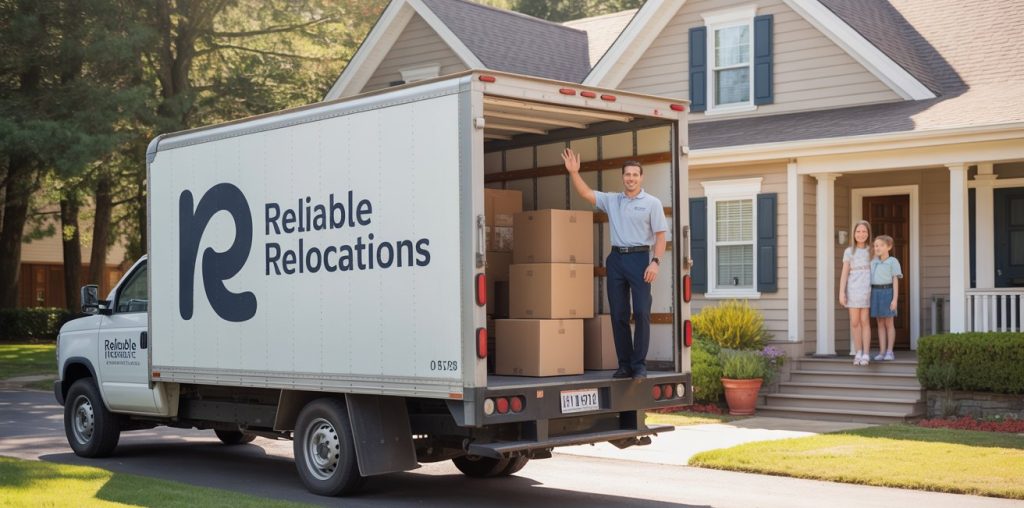Moving across state lines involves more than just packing boxes and renting a truck. Whether you’re relocating from California to Texas or just crossing into a neighboring state, you’ll face different regulations, higher costs, and longer timelines. Understanding the basics of interstate moving helps you avoid expensive mistakes and choose the right company for your needs.
Interstate relocations fall under federal oversight, require licensed carriers, and come with unique challenges that don’t exist in local moves. This guide breaks down everything from federal requirements to cost-saving strategies for your cross-country move.
Understanding Interstate vs. Local Moving
Any move that crosses state lines is considered interstate, regardless of distance. Moving 20 miles from New York to New Jersey? That’s interstate. Relocating 500 miles within California? That’s intrastate.
The distinction matters because interstate movers must comply with Federal Motor Carrier Safety Administration regulations. These companies need a USDOT number, carry specific insurance levels, and follow consumer protection rules. Intrastate moves are regulated by individual state transportation departments.
Costs typically run lower for intrastate moves since you’re dealing with shorter distances and simpler logistics.
How Much Interstate Moving Actually Costs
Moving expenses depend on distance and home size. A one-bedroom apartment moving 1,000 miles costs around $2,500 on average, while a four-bedroom house going coast-to-coast can hit $15,000 or more.
Time of year significantly impacts pricing, with summer moves costing 20-30% more than winter relocations. Access challenges like stairs or long carries increase labor charges. Additional services like packing or storage add to your final bill.
Most companies charge by weight and distance. Expect to pay $50-$80 per 100 pounds for moves under 1,000 miles, with rates dropping to $30-$50 per 100 pounds for longer distances. Full-service packing adds $500-$1,500. Storage runs $75-$300 monthly. Vehicle shipping averages $1,000 for cross-country transport.
Federal Requirements Every Interstate Mover Must Meet
According to the Federal Motor Carrier Safety Administration, before hiring any company, verify they have a valid USDOT number through the agency’s online database. This check takes under a minute and protects you from unlicensed operators.
Licensed carriers must provide written estimates, a copy of “Your Rights and Responsibilities When You Move,” a Bill of Lading that serves as your contract, and an inventory list documenting all items being moved.
If a company can’t produce these documents, walk away. Scam movers exploit people who don’t know their federal protections. The FMCSA requires movers to offer basic valuation coverage at $0.60 per pound per item at no charge. Most people buy additional coverage costing 1-3% of the declared value.
Binding vs. Non-Binding Estimates
Understanding estimate types prevents surprise charges on moving day. A binding estimate guarantees your total cost won’t change, as long as you don’t add items after signing.
Non-binding estimates are the mover’s best guess based on estimated weight. Your final cost adjusts after weighing the loaded truck. You could pay less or significantly more if your belongings weigh more than expected.
Binding not-to-exceed estimates split the difference. You’ll pay the quoted amount or less, but never more. Most budget-conscious customers prefer this option because it provides cost certainty while allowing for potential savings.
Planning Your Interstate Move Timeline
Book your mover at least six weeks before your target date. During peak season from May through September, push that to eight weeks. Last-minute bookings limit your options and often cost 20-30% more.
Research companies eight weeks out. Book your mover six weeks before. Start decluttering four weeks ahead. Begin packing three weeks out. Notify utilities two weeks before. Pack essentials and confirm details one week out.
Interstate deliveries typically take 2-14 days depending on distance. Cross-country moves average 7-10 days. Companies provide delivery windows rather than specific dates.
Choosing Between Carriers and Brokers
Moving carriers own their trucks and employ their own crews. Brokers connect you with available carriers in their network.
Carriers offer more consistency and accountability. However, they may have limited availability. Brokers provide flexibility and often lower prices. The downside? Service quality varies because you’re dealing with subcontractors.
Always check if you’re hiring a carrier or broker. Ask brokers which carrier will handle your move and verify that company’s USDOT number independently.
Red Flags That Signal Moving Scams
The moving industry has a significant fraud problem. Protect yourself by watching for warning signs.
Companies demanding deposits over 33% raise red flags. Movers who avoid in-home estimates often hide their true intentions. Listings with no physical address suggest illegitimate operations. When the company name doesn’t match their USDOT registration, something’s wrong. Movers insisting on cash-only payment want to avoid accountability.
Legitimate companies accept credit cards and provide detailed contracts. They won’t hold your belongings hostage for additional payment. Getting three quotes from properly licensed companies helps you spot outliers.
Cost-Saving Strategies That Actually Work
Moving during off-peak times from October through April saves 20-30% compared to summer rates. Mid-month and mid-week moves cost less than month-end and weekend bookings.
Reduce weight by decluttering ruthlessly. Moving companies charge by weight, so selling or donating items before packing directly cuts costs. Pack yourself if you’re physically able. Professional packing adds $500-$1,500 to your bill. Buying your own supplies costs $200-$400.
Compare multiple quotes but look beyond the bottom line. The cheapest option often becomes the most expensive if the company damages belongings. Balance cost with reputation and customer reviews. Ask about discounts for military personnel, seniors, students, and first responders.
What to Expect on Moving Day
Professional movers should arrive during the scheduled window with a truck displaying the company name and USDOT number. The crew leader will review the inventory list and note item conditions.
Read everything before signing. The Bill of Lading becomes your binding contract. Verify all details including addresses and charges. For interstate moves, federal law requires full payment before unloading at your destination.
Take photos of valuable items before loading. Document existing damage on the inventory list. Consumer protection information from the U.S. Department of Transportation outlines your rights if disputes arise.
Conclusion
Interstate moving requires more planning and higher costs than local relocations, but understanding federal regulations and pricing structures puts you in control. Start your search early, verify USDOT numbers, get multiple quotes, and read customer reviews before committing.
The key to a successful cross-country move is choosing a licensed carrier that balances cost with reliability. Expect to pay $2,500-$18,000 depending on your home size and distance, with the average landing around $4,500 for a three-bedroom house.
Remember that the cheapest quote often leads to the most expensive problems. Focus on companies with strong track records, transparent pricing, and proper licensing. Your belongings are worth protecting with the right interstate moving partner.

